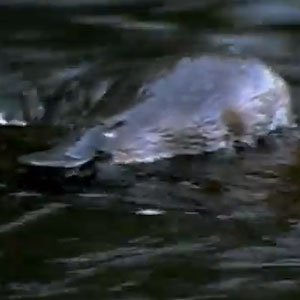'Godzilla Platypus' Species Discovered In Australia
Scientists believe they have uncovered the previous existence of a new (but now extinct) species, nicknamed ‘Godzilla Platypus’ because it is believed to have been twice the size of the platypus living today.
This large platypus was discovered after researchers Rebecca Pian, Mike Archer and Suzanne Hand found a large tooth in a fossil (reportedly believed to be between 15 and 5 million years old) in Riversleigh World Heritage Area of Queensland, Australia. The platypus would have grown to be more than three feet long and is thought to have possessed large teeth used to kill prey (the modern-day platypus is toothless.) The researchers believe that, like its modern counterparts, the Godzilla Platypus was a mostly water-bound mammal that found refuge in freshwater ponds.
A larger study on the species, dubbed Obdurodon tharalkooschild, is described in more detail by researchers Pian – a Ph.D. candidate at Columbia University–and UNSW (University of New South Wales) School of Biological Earth and Environmental Sciences Professors, Archer and Hand, in a study published in the Journal of Vertebrate Palaeontology.
“A new platypus species, even one that is highly incomplete, is a very important aid in developing understanding about these fascinating mammals,” Pian said about the study.
According to Archer, who gave the species the name ‘Godzilla Platypus’ this discovery could radically change scientists’ beliefs on the evolution of the platypus as the animal was thought to have a fairly linear evolutionary past. The existence of a new species that has become extinct opens up the possibility for more unknown relatives of the modern platypus.
“Discovery of this new species was a shock to us because prior to this, the fossil record suggested that the evolutionary tree of platypuses was a relatively linear one. Now we realize that there were unanticipated side branches on this tree, some of which became gigantic,” Archer says.
In an interview, Archer simplifies the importance behind the find: “We didn’t expect this. It’s a huge platypus at the wrong time. But there it was.”
The researchers also state that the surrounding fossils found near the tooth can give them an insight into what this ‘Godzilla Platypus’ ate.
“[Godzilla Platypus] was a very large platypus with well-developed teeth, and we think it probably fed not only on crayfish and other freshwater crustaceans, but also on small vertebrates including the lungfish, frogs, and small turtles that are preserved with it in the Two Tree Site fossil deposit,” Hand says.
The Godzilla Platypus, or Obdurodon tharalkooschild, is reportedly the fifth new species to be discovered in Australia in a month.
– Olivia Truffaut-Wong
Get Uinterview’s FREE iPhone App For Daily News Updates here.
Get the FREE Uinterview iPad app here and watch our videos anywhere.
RELATED ARTICLES
Get the most-revealing celebrity conversations with the uInterview podcast!








Leave a comment